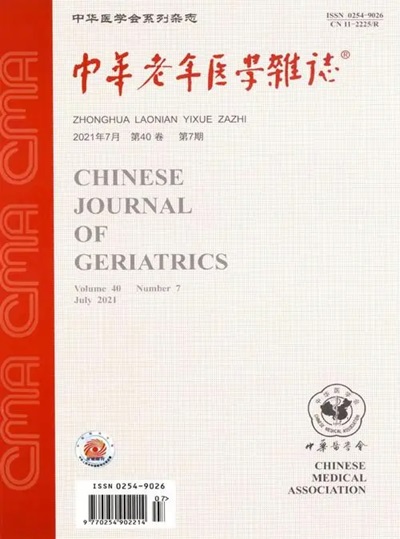Assessment of left atrial function in elderly patients with ischemic mitral regurgitation by real-time three-dimensional speckle tracking imaging
引用次数: 0
Abstract
Objective To assess left atrial(LA)function by evaluating changes of LA wall movement and volume detected by real-time three-dimensional speckle tracking imaging(RT3D-STI)in elderly patients with ischemic mitral regurgitation(IMR). Methods Eighty-six elderly patients with coronary heart disease(CHD)were enrolled in this study.According to whether or not to have IMR, the patients were divided into the pure CHD group(n=32)and the CHD-induced ischemic mitral regurgitation(IMR)group(n=54, including 20 cases of mild IMR, 18 cases of moderate IMR and 16 cases of severe IMR). Thirty-two healthy elderly volunteers were considered as control group.RT3D-STI was used to evaluate the global atrial longitudinal strain(GLS), global circumferential strain(GCS), global radial strain(GRS)and LA maximal, minimal and pre-systolic volumes(LAVmax, LAVmin, and LAVp). LA ejection fraction(LAEF), LA passive ejection fraction(LApEF)and LA active ejection fraction(LAaEF)were calculated.The relationship of LA volume changes and myocardial strain with LA function was analyzed. Results The left ventricular ejection fraction(LVEF)and LAEF were reduced in CHD group and IMR group as compared with the control group, and were lower in IMR group than in CHD group(P<0.05). Compared with the control group, the LAVmin was increased, and the LAaEF was decreased in the IMR group(P<0.05). Compared with the control group, the GLS, GCS, GRS were declined in the CHD and IMR groups, and were lower in IMR group than in control group(P<0.05). Along with the increased severity of regurgitation, GLS, GCS, and GRS were decreased in varying degrees.The standard deviations of time to peak longitudinal strains(TLS-SD), of time to peak circumferential strains(TCS-SD), and of time to peak radial strain(TRS-SD)rose in the IMR group as compared with the control group(P<0.05). The myocardial motion indicators(GLS, GCS, GRS)had a quite strong correlation with LAEF in the CHD and IMR groups(CHD group: r=-0.745, -0.718 and 0.627, P=0.006, 0.007 and 0.009; IMR group: r=-0.785, -0.781, 0.643, P=0.006, 0.007 and 0.008). The receiver operating characteristic(ROC)curves analysis showed that the sensitivity and specificity of TLS-SD, TCS-SD and TRS-SD were 89.7% and 81.8%, 78.6% and 84.8%, 85.7% and 72.1%, respectively in the evaluation of LA function changes. Conclusions RT3D-STI can precisely and objectively assess the LA function changes by measuring the volume changes and tracing the myocardial motion in elderly IMR patients. Key words: Coronary disease; Mitral valve insufficiency; Echocardiography, three-dimensional; Atrail function, left实时三维散斑跟踪成像评价老年缺血性二尖瓣反流患者左心房功能
目的通过实时三维散斑跟踪成像(RT3D-STI)检测老年缺血性二尖瓣反流(IMR)患者左心房壁运动和容积的变化,评价左心房(LA)功能。方法86例老年冠心病患者参加本研究。根据是否有IMR,将患者分为单纯CHD组(n=32)和CHD诱导的缺血性二尖瓣反流(IMR)组(n=54,其中轻度IMR 20例,中度IMR 18例,重度IMR 16例)。32名健康的老年志愿者作为对照组。RT3D-STI用于评估整体心房纵向应变(GLS)、整体周向应变(GCS)、整体径向应变(GRS)以及左心房最大、最小和收缩前容积(LAVmax、LAVmin和LAVp)。计算左心房射血分数(LAEF)、左心房被动射血分数和左心房主动射血分数。分析左心房容积变化和心肌应变与左心房功能的关系。结果CHD组和IMR组左心室射血分数(LVEF)和左心房射血分数较对照组降低,IMR组较CHD组降低(P<0.05),与对照组相比,IMR的左心室射气分数(LAVmin)升高,左心房射气分数下降(P<0.05),IMR组明显低于对照组(P<0.05)。随着反流严重程度的增加,GLS、GCS和GRS均有不同程度的下降。时间峰值纵向应变(TLS-SD)、时间峰值周向应变(TCS-SD)的标准偏差,与对照组相比,IMR组的心肌运动指标(GLS、GCS、GRS)与LAEF有很强的相关性(CHD组:r=-0.745、-0.718和0.627,P=0.006、0.007和0.009;IMR组:r=-0.1785、-0.781、0.643,P=0.006,0.007和0.008)分析表明,TLS-SD、TCS-SD和TRS-SD对左心房功能变化的敏感性和特异性分别为89.7%和81.8%、78.6%和84.8%、85.7%和72.1%。结论RT3D-STI可以通过测量老年IMR患者的体积变化和追踪心肌运动,准确、客观地评估左心房功能的变化。关键词:冠心病;二尖瓣关闭不全;超声心动图,三维;Atrail功能,左侧
本文章由计算机程序翻译,如有差异,请以英文原文为准。
求助全文
约1分钟内获得全文
求助全文

 求助内容:
求助内容: 应助结果提醒方式:
应助结果提醒方式:


